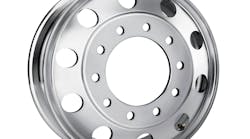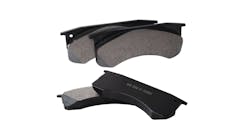Tire tread depth needs to be measured for two key reasons:
- The U.S. DOT has minimum tread depth standards for commercial tires. These standards, dependent on wheel position, are: the legal limit in the fastest wearing groove – 4/32” for steer tires; 2/32” for drive, trailer and dolly tires.
- It helps to get the most life out of the casing.
Tires are expensive, making the casing quite valuable when it comes to retreading, officials with Pressure Systems International (www.psitireinflation.com), a global leader in automatic tire inflation systems, note. Waiting to remove tires until they reach the legal tread depth limit will leave the casing more susceptible to damage from stones, cuts and tearing.
They recommend removing tires somewhere between 6/32” to 8/32’ of remaining rubber to get the most life out of the casing. For trailer tires that have been retreaded for the last time, they suggest running them down to the 2/32” legal limit.
Performance Baseline
Company officials say fleets should establish a tire performance baseline by calculating miles/32” of rubber for the various specific tire makes and models running in their operation. Tread wear is measured either in actual tire removal miles or in miles/32”.
Miles/32” is the more accurate measurement when comparing tire models with different starting tread depths, they point out. By way of example, a steer tire may have 18/32” when new, while a different design steer tire may begin with 22/32” of rubber.
Tires that see pure linehaul service can see between 10,000 and 20,000 miles/32”, Pressure Systems International officials say. But the same tires running in pickup and delivery city service, with lots of turning, may only get 5,000 or 6,000 miles/32”.
Service vocation is the number one variable affecting treadwear, they note. Assuming that all tires are running in similar service vocations on the same route with similar loads, the next largest variable affecting tire wear is the driver.




